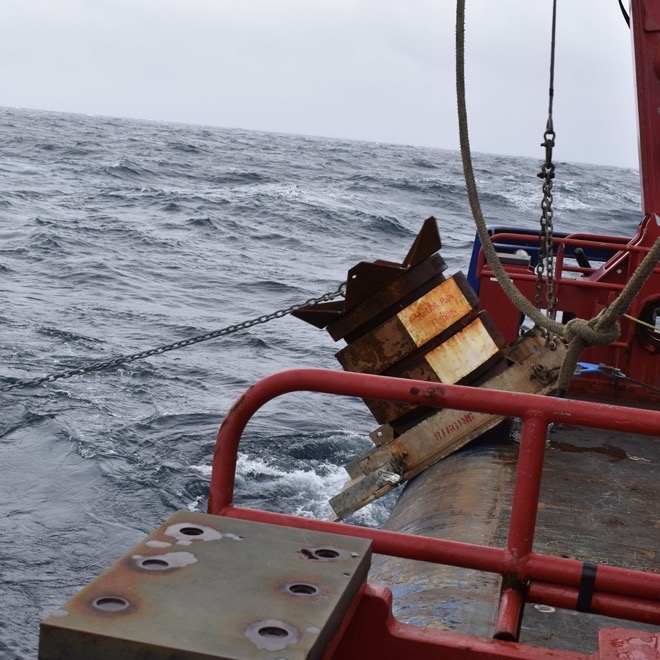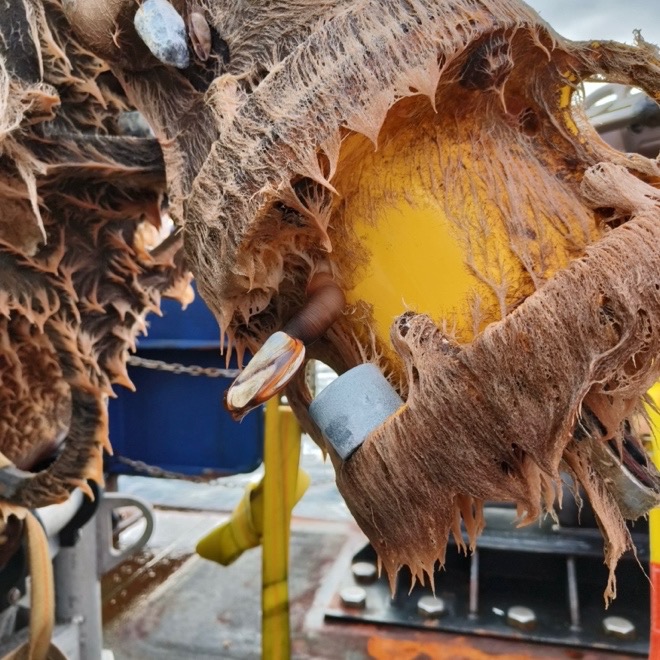Global Station Papa Expedition Succeeds Despite Weather
And what a wild ride it was! The US National Science Foundation Ocean Observatories Initiative (OOI) 11th expedition to the Global Station Papa Array aboard the R/V Sikuliaq had a bit of trouble with the weather gods during its 17-day journey in the Gulf of Alaska. For safety reasons because the ship cannot deploy large moorings in conditions with ~20’ seas and high winds, the ship spent almost five of the 17-days moving in and out of the array site, trying to find “safer ground” to wait out the worst of the storms.
Nonetheless, the Coastal and Global Scale Nodes team (CGSN) based at Woods Hole Oceanographic Institution (WHOI) and a Waverider mooring team from the University of Washington succeeded in meeting all their mission objectives. Despite the extra transit and down days, the teams recovered and deployed three OOI subsurface moorings and two open ocean gliders. They recovered and deployed a Waverider mooring for the University of Washington. A POGO Fellowship awardee was onboard and gained valuable shipboard experience, including experiencing how safety is the underlying foundation of these at-sea operations.


The team also successfully conducted water sampling at the deployment sites and collection of shipboard underway data.
“It was a pleasure participating in the Papa 11 cruise with such a professional and able team,” said Chief Scientist Kristopher Newhall. “And as always, I can’t say enough about the skill and professionalism of the R/V Sikuliaq’s officers and crew.” This is the fifth time Newhall has led the annual recovery and deployment cruise to Global Station Papa.

The site is in the Gulf of Alaska, about 620 nautical miles offshore, in a critical region of the northeast Pacific with a productive fishery subject to ocean acidification, low eddy variability, and impacted by the Pacific Decadal Oscillation. “We are pleased that Station Papa is now set to provide data for the next year from this critically located region,” Newhall added.
A more detailed report of the expedition can be found here.



